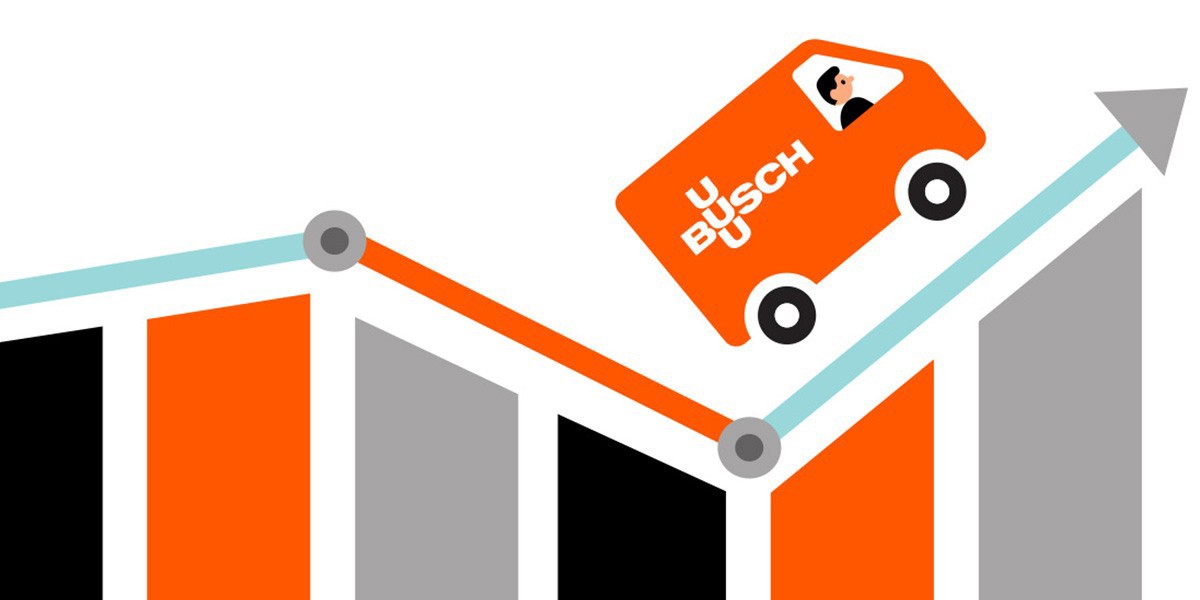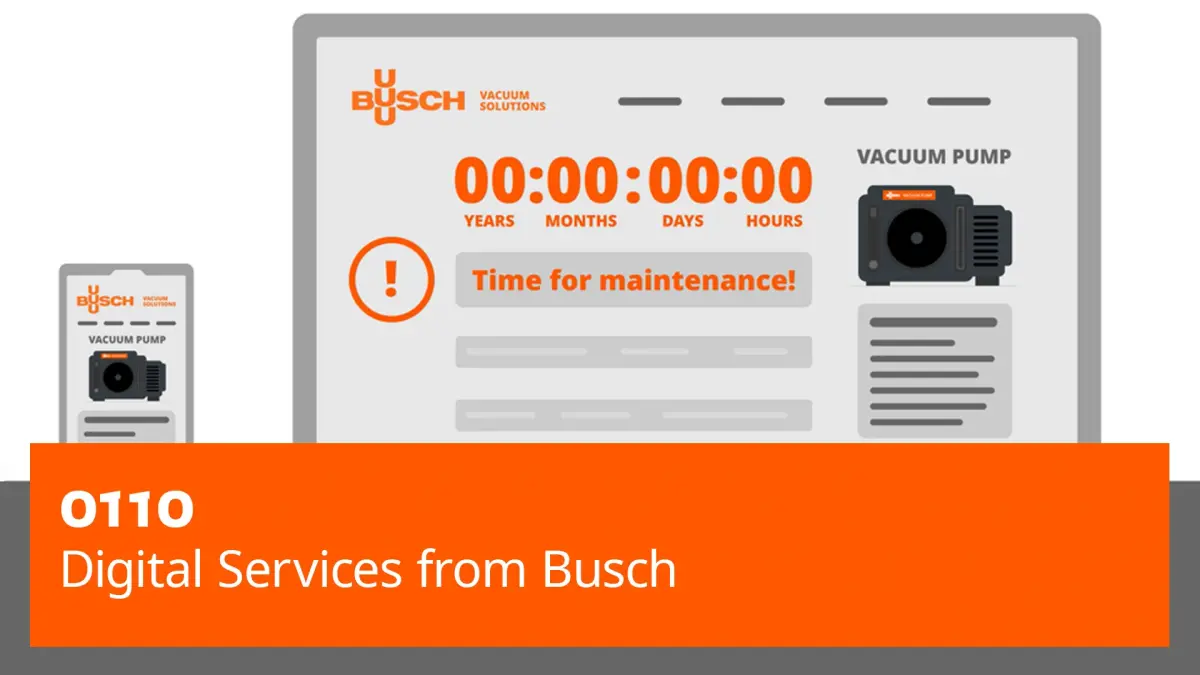
Source: Busch Group
How to Optimize Your Vacuum System: A Step-by-Step Guide to Boost Efficiency and Save Costs
Is your vacuum system costing you more than it should? Only a fully optimized and well-maintained system delivers peak performance at minimum operating costs. The good news: It is never too late to optimize. Enhancing your setup can boost process efficiency, cut costs, and lead to greater energy savings.
What is a vacuum system?
A vacuum system is more than just a single pump. It is a comprehensive solution designed to create and maintain the right vacuum level for your process, from food packaging and plastics processing to wastewater treatment. It includes everything from pipes, gauges, and valves to control units. Each component plays a crucial role in ensuring reliable and efficient operation. Since every application has its own requirements, your vacuum system must be precisely tailored to your process.
There is no one-size-fits-all solution. Depending on your process, a standardized system that is easy to install may be sufficient. In other cases, a partially centralized setup – with the vacuum supply installed in a separate room – can reduce noise and heat on the production floor. For the most demanding applications, tailor-made systems offer the greatest efficiency by addressing specific process needs.
Vacuum systems help manufacturers facilitate automated processes by generating vacuum for tasks like handling and lifting. Additionally, they keep the production area clean by creating controlled, enclosed environments.
In short, a vacuum system has many benefits. However, only an optimized system delivers the performance you are expecting in your production. Discover what you can do to improve your process!
A vacuum system is more than just a single pump. It is a comprehensive solution designed to create and maintain the right vacuum level for your process, from food packaging and plastics processing to wastewater treatment. It includes everything from pipes, gauges, and valves to control units. Each component plays a crucial role in ensuring reliable and efficient operation. Since every application has its own requirements, your vacuum system must be precisely tailored to your process.
There is no one-size-fits-all solution. Depending on your process, a standardized system that is easy to install may be sufficient. In other cases, a partially centralized setup – with the vacuum supply installed in a separate room – can reduce noise and heat on the production floor. For the most demanding applications, tailor-made systems offer the greatest efficiency by addressing specific process needs.
Vacuum systems help manufacturers facilitate automated processes by generating vacuum for tasks like handling and lifting. Additionally, they keep the production area clean by creating controlled, enclosed environments.
In short, a vacuum system has many benefits. However, only an optimized system delivers the performance you are expecting in your production. Discover what you can do to improve your process!
Step 1: Get clarity with a complete system evaluation
Optimization starts with understanding how your current vacuum system is operating. This means identifying where you stand today. A professional assessment, like Vacuum Diagnostics from Busch, helps uncover hidden potential in your vacuum supply. During the assessment, our experts analyze and assess every factor that could enhance the performance of your process. From the condition of your vacuum equipment to energy consumption or maintenance plans.We also conduct a visual inspection of your entire vacuum installation. This includes all valves, filters, and gauges, as well as the piping that connects the pumps to each other and the machinery in your process. By conducting a thorough on-site analysis, we can pinpoint performance gaps, energy loss sources, and identify necessary changes.
Step 2: Set clear goals for energy efficiency and cost savings
Once your system is assessed, it is time to define what you want it to achieve. Maybe it is lower energy consumption. Maybe it is fewer interruptions, quieter operation, or faster cycle times.Whatever your priorities, this is your chance to set the direction. Together, we define clear goals and identify where upgrades or tweaks can make the biggest difference. Then, we map out a tailored strategy that ensures your vacuum system delivers peak efficiency for your process.
Step 3: Customize your vacuum system
Using insights from Vacuum Diagnostics, we help you utilize the full potential of your vacuum system. This might include:- Upgrading to energy-efficient vacuum pumps
- Integrating variable speed drives
- Optimizing maintenance plans
- Implementing intelligent monitoring systems like OO – Digital Services from Busch
- Concluding a service contract
Every vacuum process is unique, so optimization often requires a smart mix of strategies. By thoroughly analyzing your current setup with our Vacuum Diagnostics, we deliver personalized recommendations that match your needs, helping you get the best out of your vacuum system.
Step 4: Monitor system performance
After your vacuum system has been optimized, performance monitoring tools like our digital assistant OO can help you track the health of your vacuum pumps. Our IoT solution reports the status of your vacuum pumps 24/7 and provides key information for better production and purchase decisions. It sends you notifications if something is not going according to plan, helping to identify any issue before it impacts performance.Step 5: Proactive maintenance for long-term efficiency
Even the best system needs care. Preventive maintenance is the final piece of the optimization puzzle. We help you keep your equipment in top health with targeted maintenance, scheduled service plans, and global support. All the while ensuring that you do not have to deal with unplanned downtime.Simple tasks like regular oil changes, filter replacements, and performance check-ups extend pump life and keep everything running smoothly. In fact, long-term maintenance can save up to 50% in energy costs compared to neglected systems.
Learn more about Vacuum Pumop Maintenance
Conclusion: From diagnostics to efficiency and savings
Optimizing your vacuum system is an investment that yields significant returns in energy efficiency, cost savings, and reduced downtime. By systematically evaluating your current setup, defining clear performance goals, customizing your system with tailored solutions, diligently monitoring its performance, and committing to regular maintenance, you can improve your vacuum operations.This comprehensive approach, from initial diagnostics to ongoing monitoring, ensures that your vacuum system meets operational demands, ultimately contributing to a more efficient and reliable production environment. Embrace optimization as a continuous journey to unlock the full potential of your vacuum system and secure long-term success.
Ready to unlock your system’s full potential?
Let’s optimize your vacuum system — tailored to your industry and goals.
Let’s optimize your vacuum system — tailored to your industry and goals.




